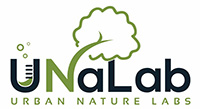 |
Inspiration Card
Governance Actions |
|
Estrategia municipal y planificación
|

|
G2 Establecer áreas experimentales para proyectos piloto
| Conocimiento y Conciencia | Compromiso Político | Organización | Costos y Beneficios Percibidos | Justicia Social y Ambiental |
| ✔ | ✔ | ✔ |
Las áreas experimentales pueden ser también importantes mecanismos para la cooperación interdepartamental, que reúne a actores de departamentos diversos, agencias municipales u otros actores urbanos para trabajar en un proyecto específica. La experimentación puede permitir el desarrollo de intervenciones sintonizadas localmente al mismo tiempo que facilitar procesos de aprendizaje a través del personal municipal, las ciudadanas y ciudadanos, los desarrolladores y otras posibles partes interesadas. Para un aprendizaje y una ampliación con éxito, es esencial que los resultados de las intervenciones a escala piloto y las lecciones aprendidas sean utilizadas para informar sistemáticamente de la incorporación del desarrollo urbano.
- Experimentación con nuevos formatos para el desarrollo y gestión del expacio público
- Exención de ciertos códigos y regulaciones
- Desarrollo de unidades organizativas asociadas en la organización municipal.
- Conversiones temporales de uso de la tierra
UNaLab Stories: Hiedanranta, Tampere[1]:
For the district development on the grounds of a derelict paper factory, the municipality of Tampere chose to establish a piloting site that is exempt from the municipal mainstream planning processes. The district was labelled “Hiedanranta – Smart and Sustainable City District of the Future” and the development phase started with an international ideas competition where international development agencies were asked to present possible development scenarios. Two ideas were selected by a jury and used in a new process of co-creation with citizens, local companies, the local research institutions and municipal employees. Together, the participants elaborated broad ideas and visions for the district. In a step-by-step process with the help of the Master Planning Department of the municipality, a detailed master plan was developed. From the beginning, the district development was given explicit funding in the city’s budget plan. This distinct budget enabled the appointment of a dedicated project team consisting of a project manager and several project employees. The district budget also enabled financing of the international project call and the co-creation processes.
The new district was partly excluded from mainstream legal obligations, e.g., building codes, to allow for new and extraordinary interventions to be implemented. Among these interventions one can find new rooftop urban farming systems and a sustainable and decentralised sanitation system. The combination of both experimental approaches – a distinct project team and funding, and a new and undeveloped municipal plot – allows for radically new technologies, management schemes and joint creation methods to be implemented. The municipality as a whole can now learn from the experiences of the project team in regard to the new processes and technologies.
[1] https://valiaikainenhiedanranta.fi/in-english/hiedanranta-smart-and-sustainable-city-district-of-the-future
